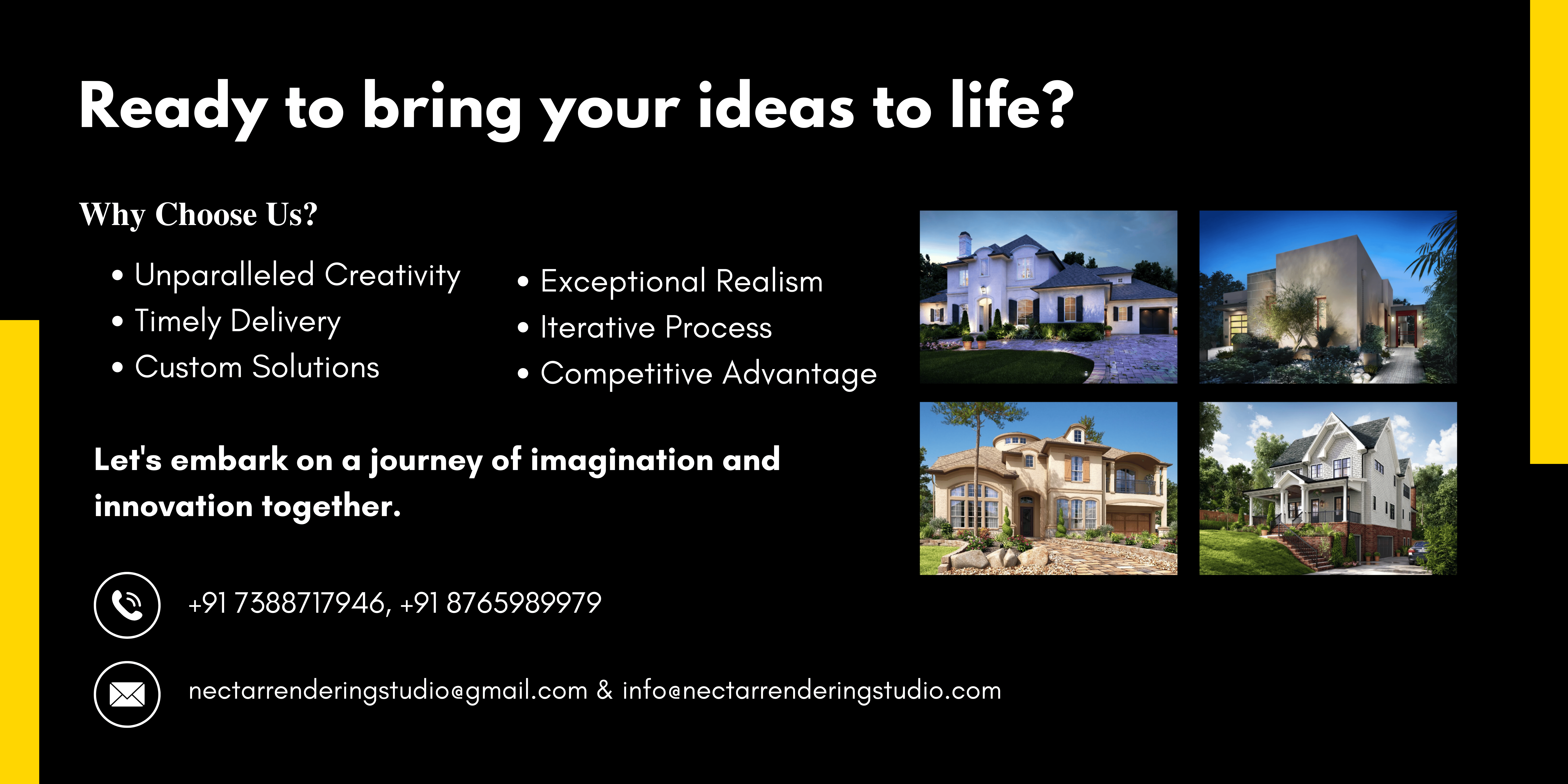In the competitive building materials industry, manufacturers are continually seeking innovative ways to showcase their products and stand out in the market. 3D rendering has become a powerful tool for manufacturers to create compelling visual content that effectively highlights the features and benefits of their building materials.
In this blog, we will explore four options for manufacturers’ marketing campaigns using building materials 3D rendering to captivate their audience, drive engagement, and boost sales.
Realistic Product Visualization
One of the primary applications of building materials 3D rendering is creating realistic product visualizations. High-quality and photorealistic renderings allow manufacturers to showcase their materials in various environments and applications. Whether it’s flooring, tiles, countertops, or exterior cladding, realistic 3D renderings enable potential customers to envision how the building materials will look in their own projects. This immersive experience builds confidence in the product’s aesthetics and quality, influencing purchasing decisions.
Manufacturers can present their building materials in different color options, textures, and finishes through 3D rendering, providing a comprehensive range of choices for customers. Additionally, 3D rendering allows for easy modifications and updates, enabling manufacturers to adapt their marketing visuals quickly based on market trends and customer preferences.
Related Blog: 3D Rendering vs Traditional Photography
Interactive Product Configurators
Interactive product configurators are a dynamic way to engage customers and empower them to customize building materials according to their specific needs. Using 3D rendering, manufacturers can create online platforms where customers can select different materials, sizes, patterns, and colors in real-time. As customers make adjustments, the configurator generates instant visual feedback, allowing them to visualize the final product before making a purchase decision.
Interactive configurators not only provide an interactive and personalized shopping experience but also serve as valuable lead generation tools. By capturing customer preferences and contact information, manufacturers can better understand their audience and follow up with targeted marketing campaigns.
Cross-Sectional Views and Material Properties
Building materials 3D rendering enables manufacturers to showcase the internal structure and properties of their products through cross-sectional views. By peeling back the layers of the material, customers can gain insights into its composition, strength, insulation capabilities, and other technical aspects. This level of detail and transparency helps customers make informed decisions, especially for materials used in critical applications such as insulation, roofing, or structural elements.
In addition to cross-sectional views, 3D rendering can visually represent material properties, such as fire resistance, thermal conductivity, and sound absorption. By effectively communicating these technical attributes, manufacturers can target specific industries or applications where their building materials excel, further enhancing their marketing campaigns’ effectiveness.
Related Blog: How to Choose the Right 3D Rendering Company in India
Application Showcases and Case Studies
Building materials 3D rendering allows manufacturers to create application showcases and case studies that illustrate how their products have been used in real-world projects. These showcases highlight the versatility and performance of the materials in various architectural settings, such as residential buildings, commercial spaces, or industrial facilities. Coupled with testimonials and success stories from satisfied customers, application showcases and case studies add credibility to the marketing campaigns and instill confidence in potential buyers.
By presenting before-and-after visualizations of projects that used their materials, manufacturers can effectively demonstrate the transformative impact of their products on the built environment. This storytelling approach resonates with customers and architects, inspiring them to explore similar applications for their own projects.
Conclusion
Building materials 3D rendering opens up a world of creative possibilities for manufacturers’ marketing campaigns. Realistic product visualizations, interactive configurators, cross-sectional views with material properties, and application showcases are just a few of the options that can captivate audiences and drive sales. Through the use of advanced 3D rendering techniques, manufacturers can effectively communicate the unique features and benefits of their building materials, positioning themselves as industry leaders and gaining a competitive edge in the market.
As the building materials industry continues to evolve, 3D rendering will remain a vital tool for manufacturers to connect with customers, architects, and designers on a deeper level. Embracing innovative marketing campaigns powered by building materials 3D rendering will undoubtedly contribute to increased brand visibility, customer engagement, and ultimately, business success.
Related Blog: Industrial Architecture 3D Rendering
____
Searching for impeccable 3D rendering Company? Look no further! 🎯
We specialize in turning your visions into awe-inspiring visual masterpieces. Whether you’re an architect, interior designer, real estate professional, or a business owner seeking to showcase your products, our top-tier 3D rendering services are tailored to meet your unique needs.



